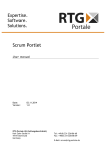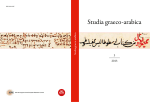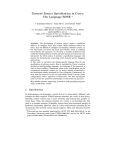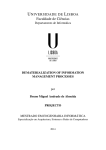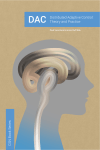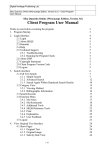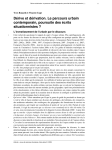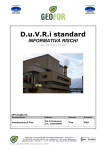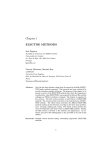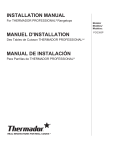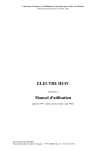Download Part II. Towards a user manual
Transcript
ISSN 2239-012X Studia graeco-arabica Studia graeco-arabica 3 2013 With the support of the European Research Council Studia graeco-arabica The Journal of the Project Greek into Arabic Philosophical Concepts and Linguistic Bridges European Research Council Advanced Grant 249431 3 _______ 2013 Published by ERC Greek into Arabic Philosophical Concepts and Linguistic Bridges European Research Council Advanced Grant 249431 Advisors Mohammad Ali Amir Moezzi, École Pratique des Hautes Études, Paris Carmela Baffioni, Istituto Universitario Orientale, Napoli Sebastian Brock, Oriental Institute, Oxford Charles Burnett, The Warburg Institute, London Hans Daiber, Johann Wolfgang Goethe-Universität Frankfurt a. M. Cristina D’Ancona, Università di Pisa Thérèse-Anne Druart, The Catholic University of America, Washington Gerhard Endress, Ruhr-Universität Bochum Richard Goulet, Centre National de la Recherche Scientifique, Paris Steven Harvey, Bar-Ilan University, Jerusalem Henri Hugonnard-Roche, École Pratique des Hautes Études, Paris Remke Kruk, Universiteit Leiden Concetta Luna, Scuola Normale Superiore, Pisa Alain-Philippe Segonds (†) Richard C. Taylor, Marquette University, Milwaukee (WI) Staff Elisa Coda Cristina D’Ancona Cleophea Ferrari Gloria Giacomelli Cecilia Martini Bonadeo Web site: http://www.greekintoarabic.eu Service Provider: Università di Pisa, Area Serra - Servizi di Rete di Ateneo ISSN 2239-012X © Copyright 2013 by the ERC project Greek into Arabic (Advanced Grant 249431). Studia graeco-arabica cannot be held responsible for the scientific opinions of the authors publishing in it. All rights reserved. No part of this publication may be reproduced, translated, transmitted in any form or by any means, electronic, mechanical, photocopying, recording or otherwise, without prior written permission from the Publisher. Registered at the law court of Pisa, 18/12, November 23, 2012. Editor in chief Cristina D’Ancona. Cover Mašhad, Kitāb āna-i Āsitān-i Quds-i Ra awī 300, f. 1v Paris, Bibliothèque Nationale de France, grec 1853, f. 186v The Publisher remains at the disposal of the rightholders, and is ready to make up for unintentional omissions. Publisher and Graphic Design Via A. Gherardesca 56121 Ospedaletto (Pisa) - Italy Printing Industrie Grafiche Pacini Studia graeco-arabica 3 _______ 2013 G2A Web Application Istituto di Linguistica Computazionale “Antonio Zampolli” Consiglio Nazionale delle Ricerche - Area della Ricerca di Pisa General Model of the computational philology application 173 Part II. Towards a user manual * Simone Marchi 1. Introduction We will describe the current operating procedures of the G2A application. The system is still under development at the Institute of Computational Linguistics; therefore, all the functions described in this provisional user manual should be considered as an exemplification of the general model described before. In its current form, the G2A application includes the following components: 1 Visualization of the parallel pericopes (View parallel pericopes) 2 Annotation of pericopes (Comments) 3 Visualization of linguistic analysis (Linguistic analysis) 4 Word search (Search) 5 Management of pericopes (Pericopes editing) Each module will be illustrated showing all the steps a user must follow to accomplish a specific operation, starting from login and along the whole activity workflow. 1.1. Open Source License The components of the G2A application developed within the “Greek into Arabic” project are available under the GNU General Public License version 3.1 2. Working with the G2A As a web application, G2A is accessible by users through a common web browser (Firefox, Chrome, etc.). Installation of any additional software on user’s computer is not required. 2.1. System Access The application can be accessed by typing the following address in a web browser: http://cophidev.ilc.cnr.it:8080/GA_Wapp/ A secure access to the system is ensured via login/password.2 Once logged in, the user is redirected to the main page (Home) which is composed of the following parts: r POUIFUPQUIFSFJTUIFNFOVCBSMJTUJOHUIFBWBJMBCMFGVODUJPOBMJUJFT&BDIPGUIFNDBOCF activated by selecting the relevant button; r POUIFMFGUVOEFSUIFIFBEJOHiBWBJMBCMFXPSLTuUIFSFJTUIFMJTUPGUIFDPMMFDUJPOTBUUIF user’s disposal. For the moment, the only collection available is the text that lies at the core of the A special thank goes to my colleague Emiliano Giovannetti who helped me in translating this part. http://www.gnu.org/licenses/gpl-3.0.html 2 After the end of the project Greek into Arabic (March 31, 2015), access to G2A Web application and data will be granted for free to universities, libraries, scholars, and students. For more information, please contact the Greek into Arabic Secretary Office ([email protected]). * 1 © Copyright 2013 Greek into Arabic (ERC ADG 249431) Studia graeco-arabica 3 / 2013 174 Simone Marchi ERC project Greek into Arabic, namely the Arabic version of Plotinus’ Greek works (i.e. the pseudoAristotelian “Theology”), but the collections available will obviously increase in number and variety. In the current version there is only the collection called “pseudo-Theology”; r 0OUIFDFOUFSUIFSFJTUIFNBJOQBHFPGUIFBQQMJDBUJPO Fig. 1. G2A web application main page. 2.2. List of Features The functionalities listed below are currently available. They can be accessed through the relevant buttons appearing in the top menu of the system: r Home to go back to the main screen; r View parallel pericopes allows users to see the sorted list of all the parallel Greek and Arabic pericopes, loaded into the system (see 2.3) r Order by Greek orders the pairs of pericopes according to the flow of the Greek text (see 2.3) r Order by Arabic orders the pairs of pericopes according to the flow of the Arabic text (default sort: this is the default ordering of pericopes the users find when accessing to the View parallel pericopes, see 2.3) r Comment allows users to create annotations, in the form of a block of free text combined (optionally) with semantically labeled comments on the pericopes (see 2.4) r Linguistic analysis allows users to view the linguistic analysis of a given pair of pericopes (see 2.5) r Search allows users to search on the text loaded (see 2.6) r Modify pericopes allows users to change the boundaries of pericopes (see 2.7) Please note that not all buttons are always present and enabled in every screen: e.g. it would make no sense to have the Order by… buttons, used to change to order of the pericopes, inside the Linguistic analysis where only a pair of pericopes is shown. Studia graeco-arabica 3 / 2013 General Model of the computational philology application 175 2.3. View parallel pericopes The visualization of the pericopes is the workflow starting point of the system: the pericopes identified in the two texts (in this case, the Arabic and the Greek texts) are presented in parallel, i.e. they are visually placed side by side. Fig. 2. Visualization of the parallel pericopes ordered by Arabic. Figure 2 shows the correspondences between pericopes. The screenshot has been created starting from the parallel pericopes view ordered according to the Arabic text flow. In this case, the image shows the parallel pericopes of the Greek text of the Plotinus’s Enneads and the Arabic pseudo-Theology of Aristotle. Each pericope is univocally identified by a specific code (“Greek” and “Arabic” columns, in Fig. 2) built on the basis of its place in the text. For example, the identifier “IV 7, 13.2-3”, relative to the second Greek pericope in Fig. 2 (and highlighted in light grey) stands for: Fourth Ennead (IV), treatise number seven (7), chapter thirteen (13), lines two to three (2-3), while the identifier “I, p. 18.16-17” of the corresponding Arabic pericope (highlighted in dark grey) stands for: First Chapter (I), page eighteen (18), lines sixteen to seventeen (16-17). Note that all the pairs of pericopes have been loaded into the system after having been manually identified by a specialist. The horizontal correspondences represent (visually) the linkage between pericopes. Thanks to this, the user can immediately verify the validity of the associations; he is also allowed to add annotations to the pair of pericopes by clicking the button with the arrow (highlighted in black) located on the right (see Comments). The default number of pairs of pericopes shown in this view is ten. This value can be changed using the relative drop-down menu (highlighted by a dashed line), the possible values being 10, 20, 50 or 500. If the total number of the pericopes exceeds the specified value, it is possible to visualize further pericopes by sliding the pages, through the left and right arrows of the navigation buttons; it is also possible to jump directly to the desired page (highlighted by a dotted line). Studia graeco-arabica 3 / 2013 176 Simone Marchi The user can also change the order of the pairs of pericopes: it is possible to sort the pericopes according to the Arabic (set by default) or the Greek textual flow by the buttons Order by Greek and Order by Arabic. Accessing the commenting view View parallel pericopes allows users to access the annotation functionalities. A given pair of pericopes can be annotated or commented upon, by selecting the corresponding arrow button on the right part of the row. Clicking on Comment, the annotation screen will be shown (for more details on the commenting procedure see below, 2.4, Comments). Accessing the linguistic analysis view As stated previously, the linguistic analysis of a given pair of pericopes can be shown by clicking the relevant arrow button and then by clicking on Linguistic analysis. For more information, one can refer to the section on linguistic analysis (see below, 2.5 Linguistic analysis). Accessing the search view Click Search to access the search feature (for more information about this feature see below, 2.6 Search). Accessing the pericopes editing view In the current version of the system the pericope editing feature is accessible via the Manage pericopes button. Refer to the relevant section for more details (see Pericopes editing). 2.4. Comments The core functionality of the system is represented by the module devoted to the annotation of pericopes with semantically labeled comments. A typical annotation consists of four main parts: r UIFTFMFDUJPOPGBQPSUJPOPGUFYUPGUIF(SFFLQFSJDPQF r UIFTFMFDUJPOPGBQPSUJPOPGUFYUPGUIF"SBCJDQFSJDPQF r UIFDPNNFOU r UIFTFNBOUJDUZQFPGUIFDPNNFOU In what follows, we will see in detail how to create a comment. A pair of pericopes must be selected from the main screen (View parallel pericopes) using the arrow button at the right of the pericopes (see Fig. 2). Once a pair of pericopes has been chosen, click on Comment (located inside the top menu) to be redirected to the Comment view (Fig. 3). Studia graeco-arabica 3 / 2013 General Model of the computational philology application 177 Fig. 3. Comment view. Here too the active features are accessible from the top menu. The interface above is splitted in two sections: a smaller one (on the left) contains the list of the comments already associated to the pair of pericopes; a larger one portion (on the right) represents the “Editor of comments”. The “Editor” is composed by three parts: r POUIFVQQFSMFGU UIF(SFFLQFSJDPQFGreek selection allows users to select the portion of text (from a single character to a sequence of words) to be commented upon; r POUIFVQQFSSJHIU UIFSFJTUIFDPSSFTQPOEJOH"SBCJDQFSJDPQFXJUIUIFSFMFWBOUCVUUPO Arabic selection; r 5IFUFYUVBMFEJUPSBMMPXTUIFVTFSUPXSJUFEPXOUIFDPNNFOUTVTJOHWBSJPVTGPOUTUZMFT (bold, italic, etc.). r BESPQEPXONFOVVOEFSUIF&EJUPS BMMPXTVTFSTUPBTTJHOBTQFDJīDUZQFUPUIFDPNNFOU so that the whole annotation can be semantically classified. In the current version the possible values of the comment type are literal translation, free rendering, amplification, misunderstanding, interpolation; to this, two additional commentaries are foreseen: glossary for terminological remarks, and additional notes for other kinds of remarks deemed necessary by the user who is at work. Choosing the right type of annotation is important since, though not in the current version of the system, it could be used to perform searches of comments belonging to specific types. The text selection can be made by highlighting the portion of text to comment upon. Click on the relevant selection button (Greek selection relevant to the Greek pericope or Arabic selection relevant to the Arabic pericope) to complete the selection: the highlighted texts will appear immediately below the two windows containing the pericopes (see Fig. 4). Studia graeco-arabica 3 / 2013 178 Simone Marchi Fig. 4. Comment view showing annotations on a pair of pericopes. Once the annotation is completed, click Submit to save the comment; an excerpt of the comment will appear in the list of comments on the left. Click on the relevant magnifying glass-shaped button in the list of comments (left panel) to edit a comment. Once the button is clicked, the comment will appear in the central Editor and the two selections, e.g. for the Greek text and for the Arabic one, will appear under the relevant pericopes. Please note that only the comment text can be edited; on the contrary, the text selections are unchangeable. At the end of the editing process, click Submit to save the edited comment. Similarly, a comment can be deleted. Click on the relevant magnifying glass-shaped button in the list of comments (left panel) to delete a comment. After having it loaded, the Delete button must be clicked. The comment will disappear from the Editor and from the list of comments on the left (of course, it will be deleted in the system database). There are two other buttons located below the window Editor: New is used to create a new comment and Clear is used to erase all the information entered inside the comment text editor panel. Studia graeco-arabica 3 / 2013 General Model of the computational philology application 179 2.5. Linguistic analysis The linguistic analysis of pericopes can be a valuable help for the understanding of texts. Fig. 5. Linguistic analysis view. The linguistic analysis view (Fig. 5) can be accessed in two ways: i) select a pair of pericopes from the parallel pericope view and click Linguistic Analysis ii) from the commenting view. In the central part of the screen there are two panels: the linguistic analysis of the Greek pericope (on the left) and the analysis of the Arabic pericope (on the right). As shown in Figure 5, each of the two pericopes is verticalized (tokenized) and each word (token) is accompanied by its morphological analysis: the “lemma” and the “part-of-speech” for Greek; the “root”, the “part-of-speech”, and the “vocalized form” for Arabic. 2.6. Search The “search functionality” is one of the most important features that a tool for computational philology (and, in general, for the management of texts) is expected to offer. The manual search for a word in all the pericopes would be time-consuming. Furthermore, it is also likely that not all of the actual occurrences are found (low recall). G2A provides both basic and composite search. Studia graeco-arabica 3 / 2013 180 Simone Marchi Fig. 6. Basic search view. The basic search view (Fig. 6) consists of three main parts: r 0O UIF MFGU QBSU UIFSF JT UIF JOEFY PG BMM UIF XPSET PG UIF UFYU UIF MJTU PG UIF MFNNBT for Greek, and the list of forms for Arabic) accompanied by their frequency, i.e., the number of occurrences; r *O UIF DFOUSBM QBSU UIFSF JT UIF TFBSDI QBOFM 'PS FBDI MBOHVBHF UIBU UIF VTFS DBO TFMFDU by the Greek and Arabic tabs) a maximum of three words to search can be specified. Through the operator drop-down menu (AND or OR) the user can specify whether or not the words he is looking for must be co-present in the same pericopes (AND operator); on the other hand, by selecting the OR operator the result set can contain pericopes including just a single word. For each word to be searched, the user can specify whether it should be interpreted as an attested form, as a lemma or, only for Arabic, as a root. It is also possible to specify a particular lexical category (part-of-speech) as an additional filter; r 5IFMPXFSQBSUJTEFTJHOFEUPTIPXUIFSFTVMUTPGUIFRVFSJFT To run the search, click the relevant button (in the lower left part of the central panel). The system also allows users to search for words in both languages simultaneously (i.e. both in the Greek and Arabic texts). To this end, the user must act in progressive steps as follows: 1 specify the word to look for in a language (for example, Greek) using the search panel; 2 click the Save parameters button; 3 switch to the other language using the Greek or Arabic tabs; 4 specify the word to look for in the other language (for example, Arabic); 5 click the Save parameters button again; 6 switch to the composite search view (Fig. 7), using the relevant tab, to see a summary of all the information inserted; Studia graeco-arabica 3 / 2013 General Model of the computational philology application 181 7 specify, using the central drop-down menu placed just above Search, if the searched Greek and Arabic words must appear simultaneously in the same pair of pericopes (AND option) or if they can also be present separately optionally (but at least one) (OR option); 8 click Search. Fig. 7 Composite search view. The query results will appear under the heading Results (bottom part of the screen). For each pair of pericopes found, the system highlights the matching words: the words in Greek in bold and the words in Arabic in light grey. 2.7. Pericopes editing The segmentation of texts in the Arabic and Greek pericopes should not be considered as a static process, and cannot be carried out in a single step: as a matter of fact, the correct partitioning in pericopes (and the association of the parallel pericopes) can be established only during the analysis, as a step of the activity of commenting upon the text. To deal with this requirement a module, called “pericope borders editor”, has been implemented. It allows, in this version, to change the pericopes borders: the boundaries of a given pericope can be moved to enlarge or to narrow the pericope itself. There are, however, several limitations in the current version of the editor. In particular, a user cannot create a new pericope, merge two or more pericopes or change the association (link) between the Greek and Arabic pericopes. Furthermore, the system does not allow the user to edit the text of the pericopes in order to avoid misalignments with the associated linguistic analyses. An improvement of the pericope editor is a work in progress: in the next version, all the current limitations will be overcome. Note that, since the process of definition of the pericopes and the alignment between two (or more) texts require specific linguistic skills and deep knowledge of the Studia graeco-arabica 3 / 2013 182 Simone Marchi domain, it cannot be automatized and will always require the manual intervention and the expertise of a scholar (see Part I by Andrea Bozzi, paragraph 4: Pondered alignment and annotation of the pericopes). Fig. 8. Pericope borders editor view. The pericope border editor interface (Fig. 8) is similar to the parallel pericopes view (see Parallel pericopes view). The pericopes can be ordered according to the Arabic flow (Order by Arabic) or according to the Greek flow (Order by Greek). If a pericope in the choosen language does not have a corresponding pericope in the other one, the Empty message is shown to underline the absence of the linked text. Click with the right mouse button on a pericope and choose the Edit option to switch to the pericope borders editor (see Fig. 9). As shown in Figure 9 (on the left), the pericope at stake appears, in bold, inside a box with its context, composed of the previous and the following pericopes (if any). The pericope at stake appears, in bold, in a box with the previous and the following pericopes (if any) in order to highlight the operating range of the editor and the result of the operation. In fact, the edit of a boundary means changing the style (bold vs. normal) of the boundary word of the pericope: the style of the word added to the pericope is set to bold while the style of the word removed from the pericope is set to normal. Just below this area, there are two pairs of buttons with arrow symbols: the first pair (on the left) is used to modify the pericope head (the starting point) and the second pair (on the right) to modify the pericope tail (the ending point). Operationally, each button can be used to move the head and the tail of the pericope to the left or to the right, thus enlarging or shortening the pericope. Click on Save to submit the changes. It is possibile to go back to the pericope editor view (or to discard the changes) by clicking on Close. Click on Back (upper left corner of the screen) to leave the pericope editor view and return to the parallel pericopes view. Studia graeco-arabica 3 / 2013 General Model of the computational philology application 183 Fig. 9. Pericope borders editor in action. Bibliography A. Bozzi - A.M. Del Grosso, “Progettazione, sviluppo e gestione di una infrastruttura filologicocomputazionale per la produzione, interrogazione e pubblicazione sul web di documenti digitali”, in G.C. Bruno - I. Caruso - M. Sanna - I. Vellecco (eds.), Percorsi migranti: uomini, diritti, lavoro, linguaggi, McGraw Hill, Milano 2011. A. Bozzi - A.M. Del Grosso, “The Web-based System for the Management of Greek-Arabic Texts”, in Middle Term Scientific Report – Greek into Arabic ECGA 249431 (October 2011). World Wide Web Consortium (W3C) www.w3.org exist-db XML database www.eclipse.org Java language exist-db.org Apache Tomcat www.oracle.com/us/technologies/java PrimeFaces UI tomcat.apache.org Text Encoding Initiative primefaces.org Open Source Initiative www.tei-c.org Eclipse www.opensource.org Free Software Foundation www.fsf.org Studia graeco-arabica 3 / 2013 Finito di stampare nel mese di settembre 2013 Finito di stampare nel mese di Giugno 2012 presso le Industrie Grafiche della Pacini Editore S.p.A. presso le Industrie Grafiche della Pacini Editore S.p.A. 7JB"(IFSBSEFTDBr0TQFEBMFUUPr1JTB 7JB"(IFSBSEFTDBr0TQFEBMFUUPr1JTB 5FMr'BY 5FMr'BY www.pacinieditore. it www.pacinieditore.it



















